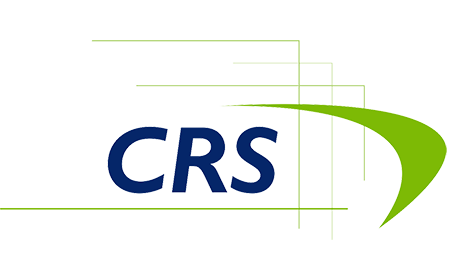Immediate Impacts of SECURE Act 2.0 on the Retirement Industry
Before Christmas in 2022, the Secure Act 2.0 was passed by Congress and signed into law on December 29, 2022, by President Joe Biden.
There are over 4,000 pages in these collective laws with a large portion affecting the retirement industry. Some of which, we believe will have a positive impact on retirement security and some of which seem pointless.
The effective dates of these various changes are not all immediate; some portions of the changes are effective now and some won’t be implemented for years. Throughout 2023, we will highlight different parts of Secure Act 2.0 and the probable outcomes on retirement plans and our participants who enroll. Starting in this post, we focus on the portion of laws that go into effect in the next 12 months and which we believe are the most significant.
Sections 101: New Plans Must Utilize Automatic Enrollment and Auto-Escalation
Effective: January 1, 2025
While this requirement won’t be effective until 2025, we believe this will have an immediate impact on the industry, so we offer our thoughts on this now (instead of waiting until future articles).
This will be one of the most impactful parts of the law. All 401(k) and 403(b) retirement plans with an effective date of January 1, 2023, MUST include an auto-enroll feature as well as an auto-escalate component. This gives plan sponsors two years to prepare for this reality.
It is well-documented that auto-enroll and auto-escalation have a dramatic impact on participation rates. Years from now, the passing of this part of the law will make these two features the “new normal” for 401(k) plans. We anticipate many older plans that have always been hesitant to auto-enroll participants and to automatically increase their contribution amount, will eventually follow suit. This law will set the new standard for retirement plans over the years and significantly increase how much Americans save for their retirement.
Exceptions to this mandate include:
- All plans in existence as of December 29, 2022.
- Small employers (10 or fewer employees)
- New employers (3 years or less).
- Churches and governmental employers.
This will be a tremendous opportunity for advisors to offer consultation to clients.
Sections 102 & 111: Increasing the Tax Credits for Businesses Starting a 401(k) for the First Time
Effective: January 1, 2023
The prior tax credit covered 50% of start-up costs for the first three years if an employer with 100 employees or less started a retirement plan for the first time. The new credit will be 100% of the start-up costs if an employer has 50 employees or less and the credit phases out between 51 – 100 employees. It also offers an additional credit for portions of employer contributions for employees who make less than $100,000 for up to five years. In short, this change increased the tax credits for the costs of running the plan and introduced a new credit that will offset a portion of the cost of the employer contributions that are made on behalf of the participants!
Section 106: 403(b) Plans May Be Operated Inside Multiple Employer Plans (MEPs) and Pooled Employer Plans (PEPs)
Effective: January 1, 2023
The SECURE Act provided for unrelated employers to join the same plan while being considered one plan for ERISA purposes. Non-profit 403(b) plans were not covered under the 2019 law and have now been included.
Section 107: Required Minimum Distribution (RMD) Age Increases
Effective: January 1, 2023
While the Secure Act 1.0 increased the age at which individuals must start taking required distributions from qualified accounts to 72 (from 70 ½), this law takes it a step further, increasing the age to 73 in 2023 and then increasing again in 2033 to 75 years of age.
Section 112: Introducing a Tax Credit for Allowing Immediate Eligibility for Military Spouses
Effective: January 1, 2023
A small tax credit (up to $500) is being offered for employers who employ military spouses and allow them to participate in their plan, subject to special eligibility and vesting requirements.
Section 113: Employers May Now Offer Small Rewards for Plan Participation
Effective: January 1, 2023
ERISA had prohibited employers from offering financial incentives (outside of the plan) for employees who contributed to their plan. The new law now allows for de minimis financial incentives (which cannot be paid for by plan assets) to be given to employees who elect to participate in the plan. Many employers have wanted to have raffles or offer gift cards for employees who signed up to participate in their retirement plans. This new law offers relief for the ERISA prohibited transaction rules that these kinds of incentives would have previously violated.
Section 128: 403(b) Plans Can Now Utilize Collective Investment Trusts
Effective: Immediately
Collective Investment Trusts (CITs) have been used for years by larger 401(k) plans to offer lower-expensed investment options to participants. This option was never available because the only allowable investments for 403(b)s were annuity contracts or mutual funds. Effective immediately, 403(b) plans may now utilize CITs as well.
Section 302: RMD Penalty Reduced by 50%
Effective: January 1, 2023
Starting next year, RMD penalties will be decreased from 50% to 25% of the amount that should have been withdrawn. This has long been considered one of the most expensive tax penalties, robbing many participants of retirement funds. While a 25% penalty still isn’t nominal, it is much less egregious than 50%.
Section 312: Shifts Burdon of Proof for Hardship Withdrawals from Employer to Employee
Effective: Immediate
ERISA attorneys have warned employers for a long time about the fiduciary burdens of their proper determination surrounding the facts and circumstances when an employee claims they need a Hardship Withdrawal. This required the employees to submit extensive documentation proving that they qualify for the distribution and also required the employer to validate the documentation before approving the withdrawal.
This new change shifts the burden to the employee to provide proof to the government if audited and allows the employee to self-certify to the employer that they understand the rules and that they qualify for the distribution, without verification by the employer.
Section 317: Employee Deferrals Allowed After Calendar Year for Solo 401(k) Plans
Effective: January 1, 2023 (not allowed for 2022 plan year)
Many companies without any employees (other than the owner) don’t use a traditional payroll setup. However, they still always had to make “employee deferral elections” before the end of the plan year (usually 12/31). Starting with the plan year 2023, for employers with no employees, both “employee deferrals” as well as employer contributions may be made up until the company’s tax filing deadline.
Section 320: Reduces Annual Plan Disclosure Requirements for Un-Enrolled Employees
Effective: January 1, 2023
Because everyone eligible to participate in a retirement plan is legally considered a “plan participant”, regardless of whether they are actually participating, employers have been required to send numerous annual notifications to employees who had no interest in participating in the plan. This created frustration among employers, increased plan expenses, and annoyed unenrolled employees with a lot of what they considered “junk mail.”
Effective with plan notices in 2023, fiduciaries will not be required to send anything to employees who do not participate in their plan except for an annual notice that they are eligible to participate. This annual notice will remind employees that they are not participating in a plan for which they are eligible but will reduce the copious amounts of junk mail that the old requirements created.
Once again, this synopsis does not include the vast number of changes that will be implemented from the SECURE Act 2.0. Rather, this is helpful perspective and commentary on portions that will be enacted sooner, rather than later – and those we believe to be the most noteworthy.
Future articles and materials from CRS will address many other aspects of future changes as a result of this legislation including, but not limited to, the following:
- “Savers Tax Credit” Changing to a Government-Funded Additional Savers Match (2024)
- Increased Catch-Up Contributions for Participants in Early 60s (2025)
- Employers May Match Student Loan Payments into 401(k) (2024)
- Low-Dollar Rollovers Without Participant Consent (2023)
- Creation of Starter-401(k) Plans (2024)
- Changes to Long-Term Part-Time Eligibility Requirements (2025)
- Emergency Savings Accounts as Part of 401(k) Plans (2024)
- New National Retirement Account Lost & Found (2024)
- Increase to Mandatory Cash Out Limits (2024)
- Changes to Nondiscrimination Testing for Younger Participants (2024)
- Elimination of Roth 401(k) RMDs (2024)
- 401(k) Plans Can Replace a SIMPLE at Mid-Year (2024)
- Ability to Combine Required Notices (2025)
Please contact CRS to receive more information about Secure Act 2.0.
Michael Davis has been in the retirement plan industry since 1994 and is our Vice President of Sales at CRS. Michael can be reached via email at .




